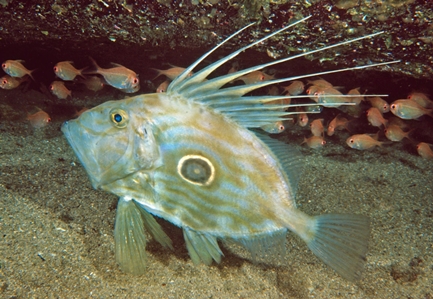General Description
Body deep, very compressed, with small, embedded cycloid scales; dorsal-fin spines with long filamentous membrranes; large bony bucklers along the bases of the dorsal and anal fins. Silvery to olive brown often with darker, wavy lines and distinct ocellus on the side. To 66 cm.
Biology
Commercially important throughout its range and a highly regarded food fish.
Habitat
Around rocky reefs and over sand, in depths of 1-240 m.
Reefs
Soft substrates
Distribution guide
Eastern Atlantic, western Indian and western Pacific Oceans. Southern Australia.
Species Group
Depth
Shallow (1-30 m)
Deep ( > 30 m)
Water Column
Max Size
66 cm
Commercial Species
Yes
Global Dispersal
Recorded in Australia
Conservation Status
- DSE Advisory List : Not listed
- EPBC Act 1999 : Not listed
- IUCN Red List : Not listed





